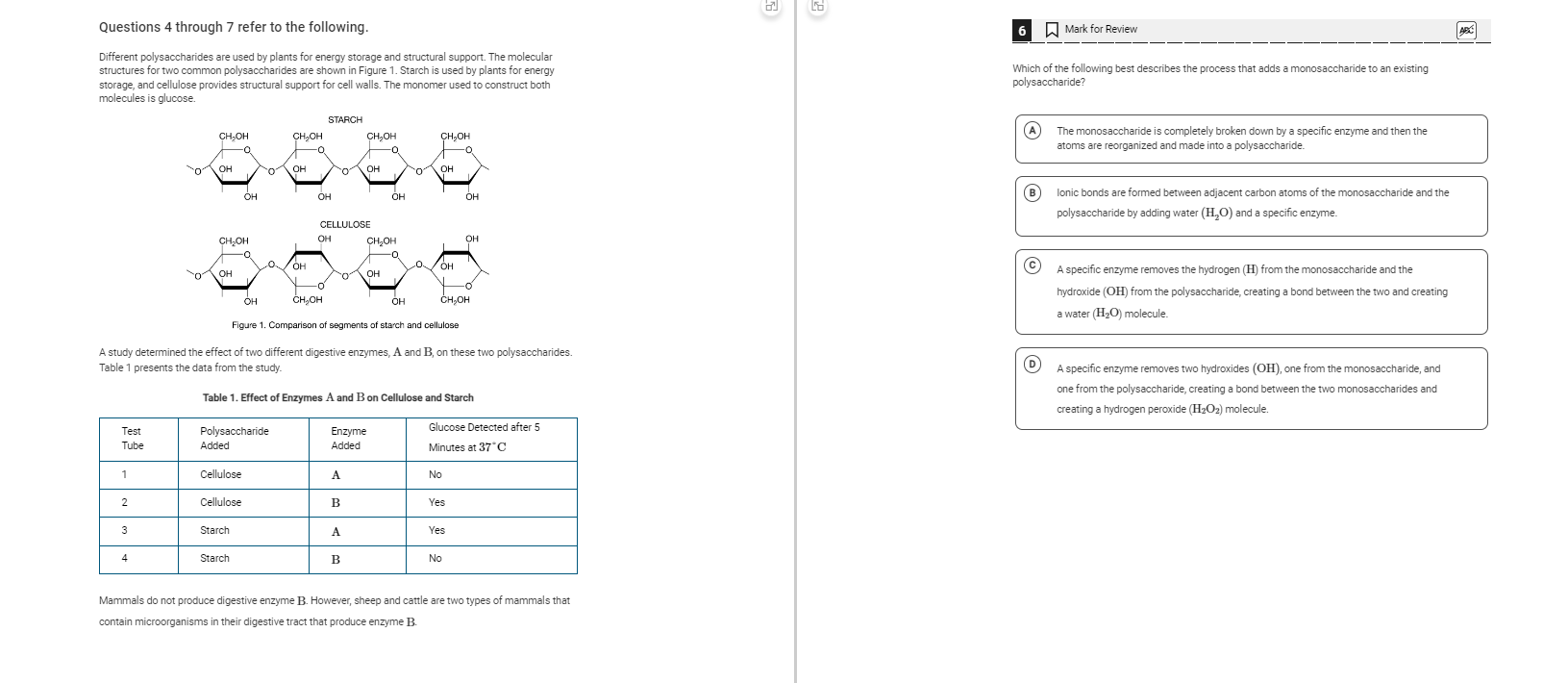Which of the following best describes the process that adds a monosaccharide to an existing polysaccharide?

Understand the Problem
The question is asking for the best description of the process that adds a monosaccharide to an existing polysaccharide. The response options illustrate different biochemical reactions related to enzyme activity and bond formation.
Answer
A specific enzyme removes the hydrogen (H) from the monosaccharide and the hydroxide (OH) from the polysaccharide, creating a bond between the two and creating a water (H2O) molecule.
A specific enzyme removes the hydrogen (H) from the monosaccharide and the hydroxide (OH) from the polysaccharide, creating a bond between the two and creating a water (H2O) molecule.
Answer for screen readers
A specific enzyme removes the hydrogen (H) from the monosaccharide and the hydroxide (OH) from the polysaccharide, creating a bond between the two and creating a water (H2O) molecule.
More Information
Dehydration synthesis, also known as a condensation reaction, involves the removal of a water molecule to form a bond. In this process, an enzyme catalyzes the reaction where a hydrogen (H) atom is removed from one molecule (monosaccharide), and a hydroxyl (OH) group is removed from another molecule (polysaccharide), forming water (H2O).
Tips
A common mistake is confusing dehydration synthesis with hydrolysis. Hydrolysis involves the addition of water to break bonds, while dehydration synthesis removes water to form bonds.
Sources
- Final Answer: Dehydration Synthesis Reaction - Brainly - brainly.com
AI-generated content may contain errors. Please verify critical information